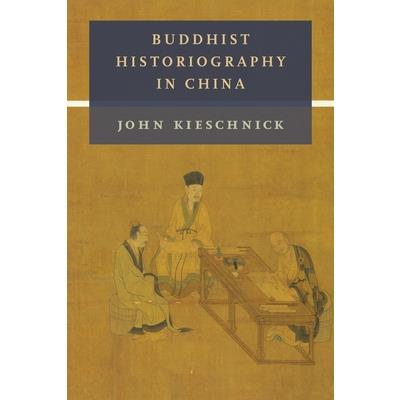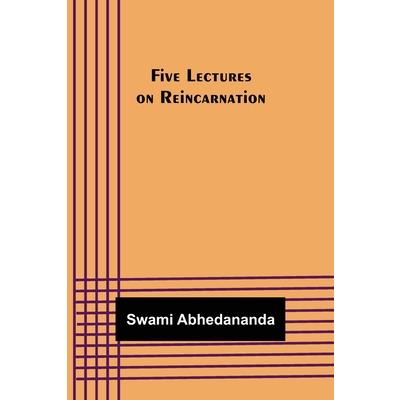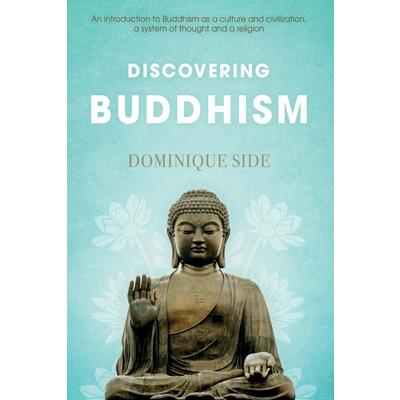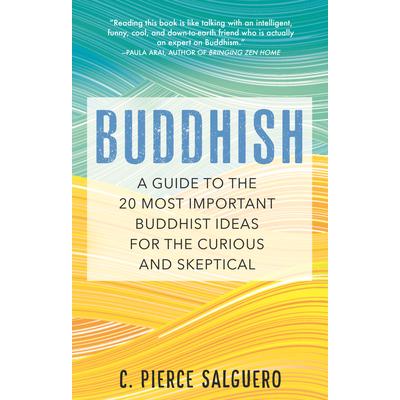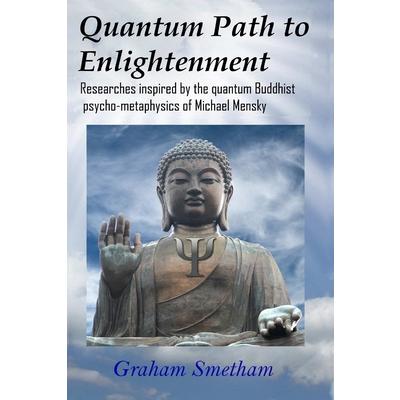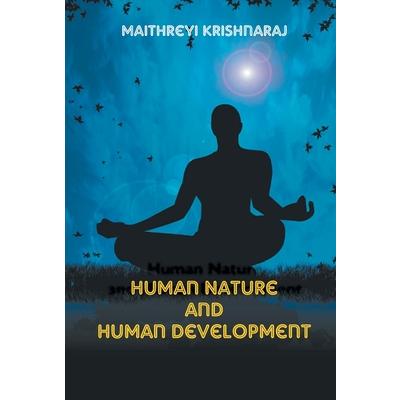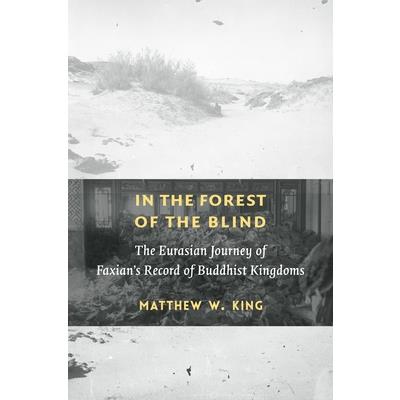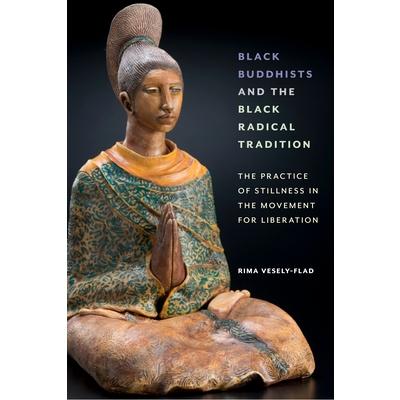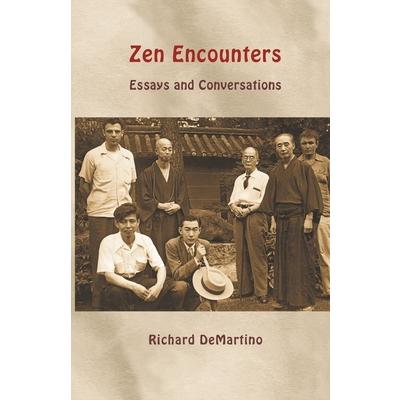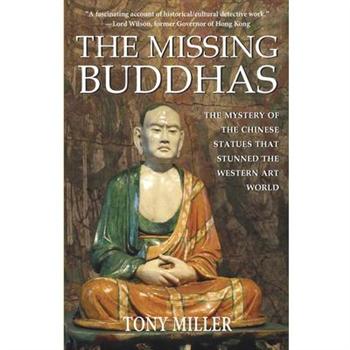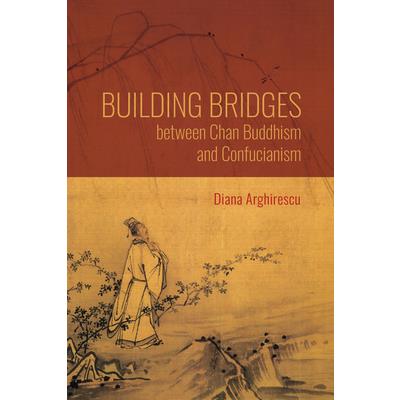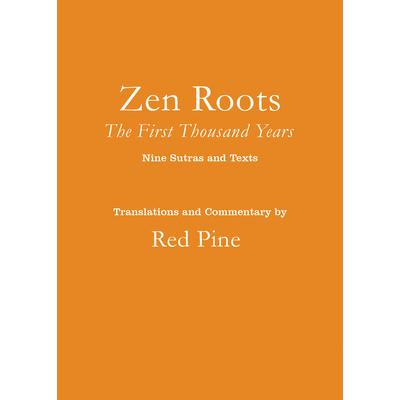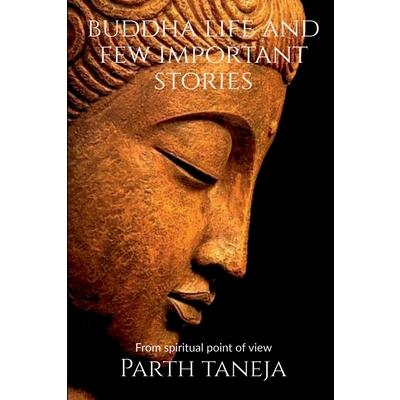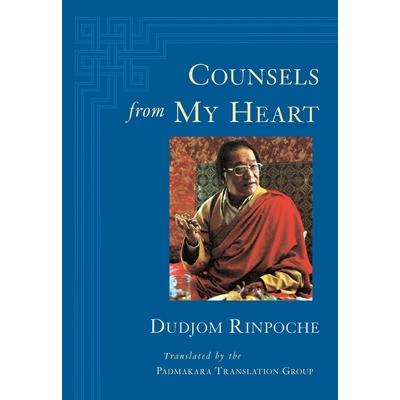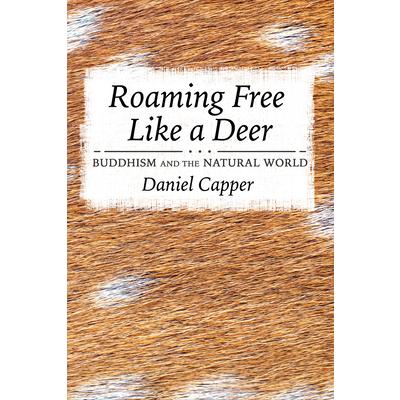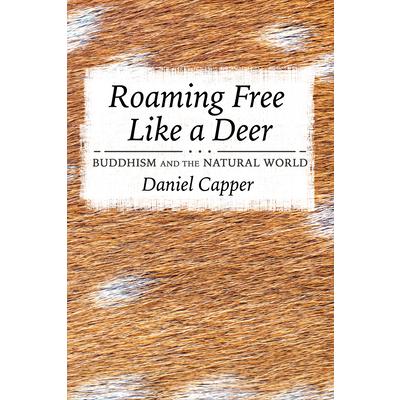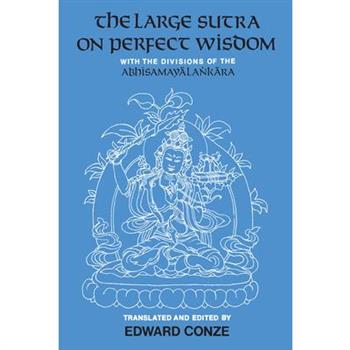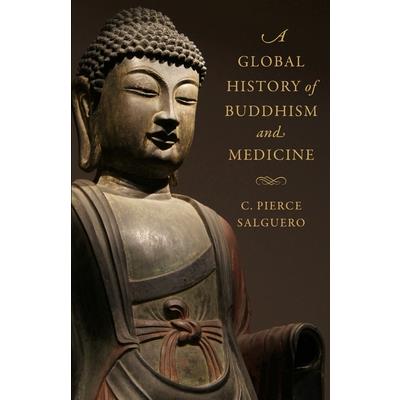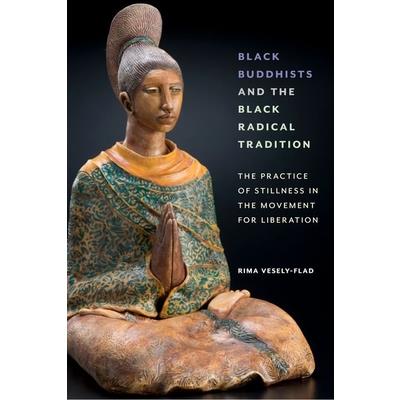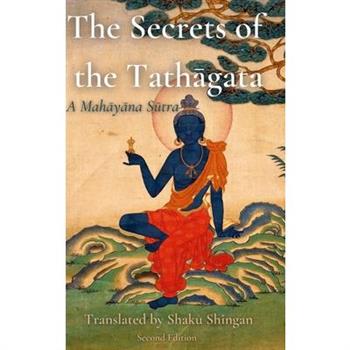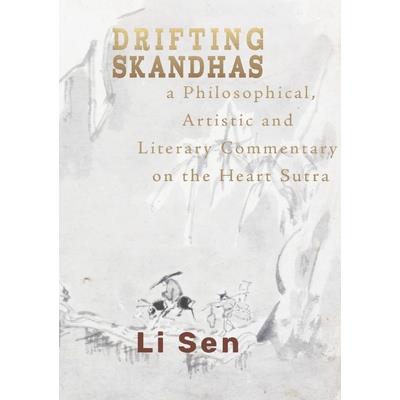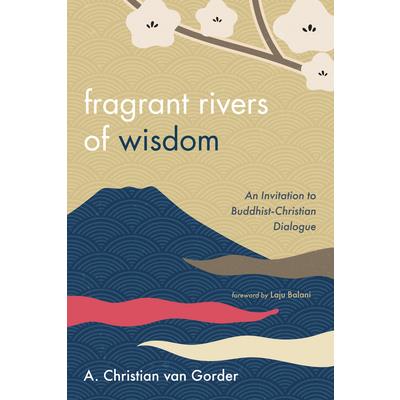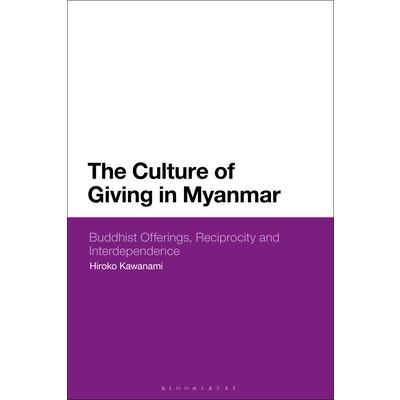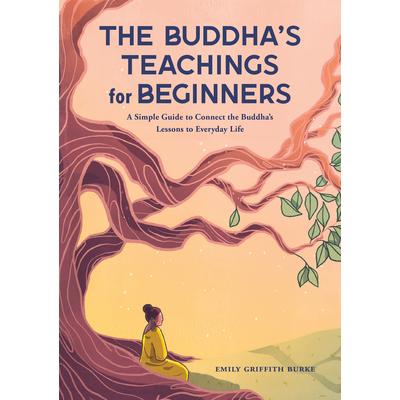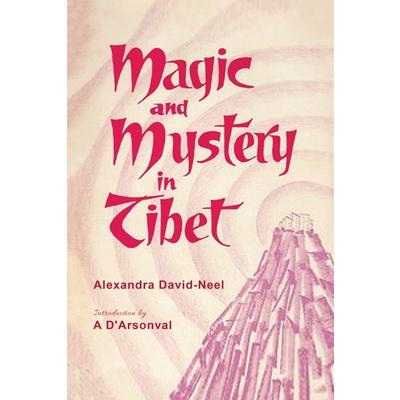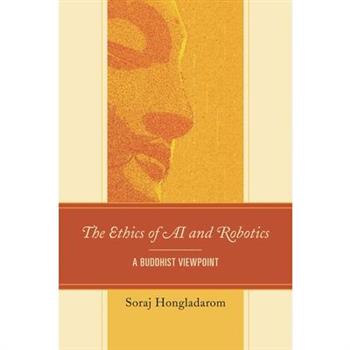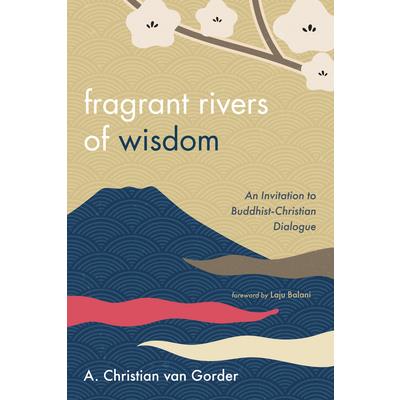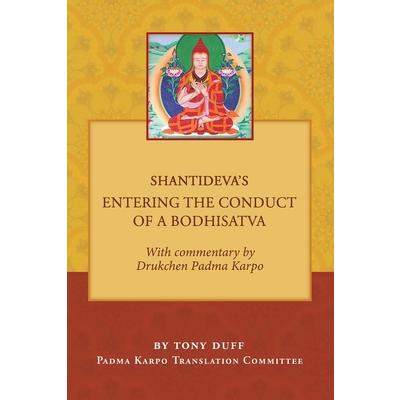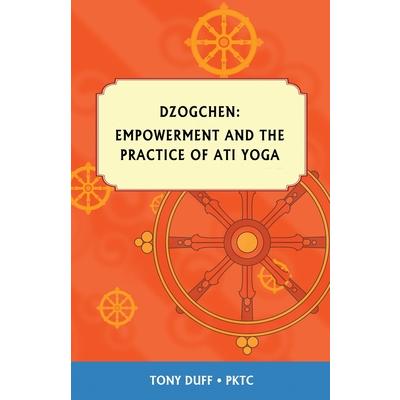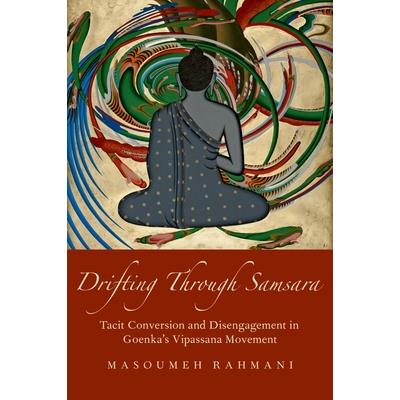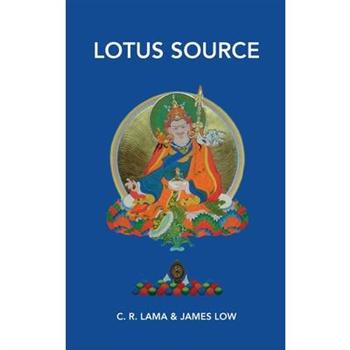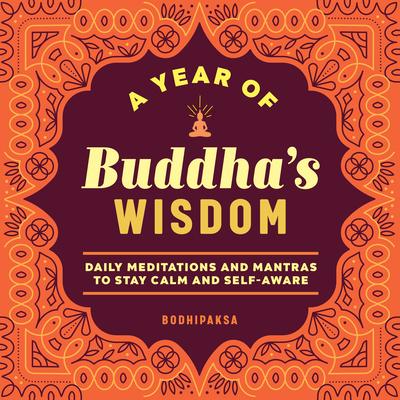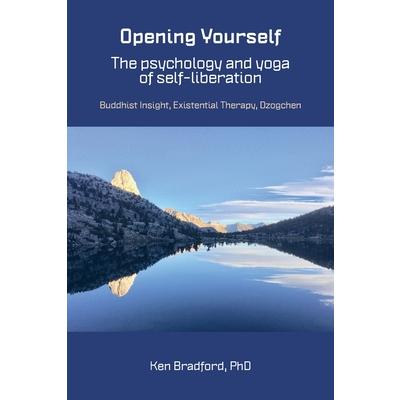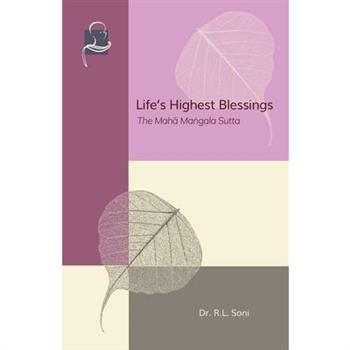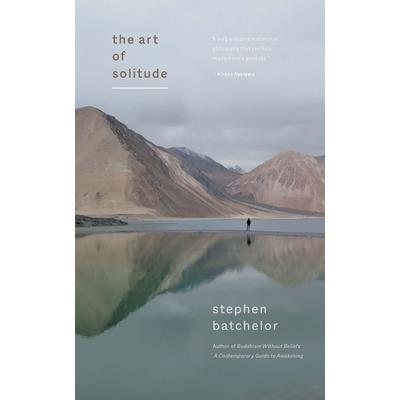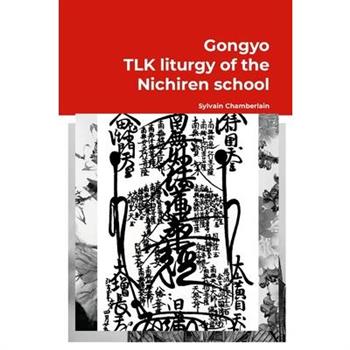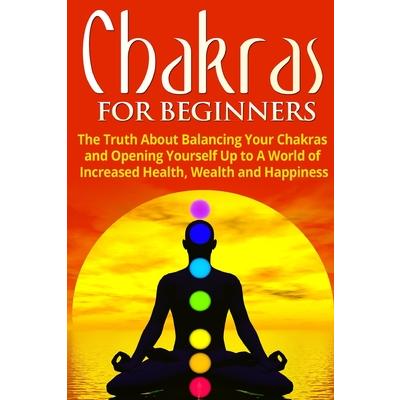Buddhist Historiography in China
Winner, 2023 Toshihide Numata Book Award, Numata Center for Buddhist Studies at the University of California, Berkeley Since the early days of Buddhism in China, monastics and laity alike have expressed a profound concern with the past. In voluminous historical works, they attempted to determine as precisely as possible the dates of events in the Buddha's life, seeking to iron out discrepancies in varying accounts and pinpoint when he delivered which sermons. Buddhist writers chronicled the history of the Dharma in China as well, compiling biographies of eminent monks and nuns and detailing the rise and decline in the religion's fortunes under various rulers. They searched for evidence of karma in the historical record and drew on prophecy to explain the past. John Kieschnick provides an innovative, expansive account of how Chinese Buddhists have sought to understand their history through a Buddhist lens. Exploring a series of themes in mainstream Buddhist historiographical works from the fifth to the twentieth century, he looks not so much for what they reveal about the people and events they describe as for what they tell us about their compilers' understanding of history. Kieschnick examines how Buddhist doctrines influenced the search for the underlying principles driving history, the significance of genealogy in Buddhist writing, and the transformation of Buddhist historiography in the twentieth century. This book casts new light on the intellectual history of Chinese Buddhism and on Buddhists' understanding of the past.
Five Lectures on Reincarnation
Five Lectures on Reincarnation "", has been considered a very important part of the human history, but is currently not available in printed formats. Hence so that this work is never forgotten we have made efforts in its preservation by republishing this book in a modern format so that it is never forgotten and always remembered by the present and future generations. These books are not made of scanned copies of their original work and hence the text is clear and readable. This whole book has been reformatted, retyped and designed.
Probing the Sutras
A compact summary like Probing the Sutras has been sorely needed for some time, as more and more Westerners have dipped into meditation without any understanding of its predominantly Buddhist scriptural underpinning. This concise, well-informed introduction to the history and contents of eleven seminal Buddhist sutras also provides suggestions for reflection, meditation, and practical applications related to the key teachings of each scripture. Readers of Probing the Sutras will be able to develop a framework for understanding Buddhist doctrines--and see the unique pearls of wisdom contained within each sutra.
Untangled
This accessible guide for walking Buddhism's eightfold path is the perfect way to combat loneliness, disconnection, and depression-true happiness is not as unattainable as it may seem. Loneliness is on the rise, with detrimental effects on our mental, emotional, physical, and spiritual wellbeing. How do we look past the surface, to discover a life filled with meaningful connection and genuine relationships? Untangled is a welcoming guidebook to finding expansive ease and true joy through the eightfold path-one of Buddhism's foundational teachings. Psychotherapist and Zen teacher Koshin Paley Ellison compassionately walks readers down these eight roads, leading them to discover true joy. Combining teachings from both Eastern and Western traditions, Paley Ellison equips readers with the tools needed to make profound change, inside and out. Infused with Paley Ellison's own anecdotes of his own life, this guide will help you transform your relationships and offers a path for social healing.
Discovering Buddhism
Discovering Buddhism introduces Buddhism as a culture and civilization, a system of thought and a religion. This fascinating book presents the views and practices of all the main Buddhist traditions without bias and addresses the history of Buddhism, the key topics taught by the Buddha, and a selection of contemporary issues. It also includes critical assessments of the material, connecting traditional accounts with contemporary scholarship.The author makes each subject relevant and interesting so readers can engage in personal reflection and inquiry. This encounter with Buddhist ideas invites readers to question their outlook on life and can help make their views more aligned with reality.The book is written in a clear and accessible way for the non-specialist and provides up-to-date information for the teaching of Buddhism in schools complemented by the educational resources available on the Windows into Buddhism website. Authoritative and comprehensive, Discovering Buddhism is the go-to resource for anyone who is curious to know who the Buddha was, what he said, and why so many Westerners today find meaning in his teachings.
Buddhish
An engaging, accessible introduction to Buddhism for those who are looking to explore a new spiritual tradition or understand the roots of their mindfulness practice. Are you curious about Buddhism but find yourself met with scholarly texts or high-minded moralizing every time you try to pick up a book about it? Well, if so, relax. This is no ordinary introduction to Buddhism; there are none of the saccharine platitudes and dense pontification that you may have come to expect. Buddhish is a readable introduction for complete newcomers that provides an objective, streamlined overview of the tradition--from unpacking the Four Noble Truths to understanding what "nirvana" actually means. For those who have already dipped their toes into the tradition through the practice of mindfulness or meditation, this guide will help you create a more well-rounded and informed experience by delving into the history of the Buddhist traditions that shape a mindful practice. Buddhist scholar Dr. Pierce Salguero analyzes the ideas and philosophy of the complex tradition through the eyes of both a critic and an admirer. He shares anecdotes from his time at a Thai monastery, stories from the years he spent living throughout Asia, and other personal experiences that have shaped his study of Buddhism. Through this guide, readers will have the opportunity to develop an approach to practice that is not quite Buddhist but Buddhish. Through engaging and lighthearted stories, Dr. Salguero breaks down 20 central principles of the tradition, including: - Awakening - Suffering - Doubt - Karma - Buddha Nature
Probing the Sutras
A compact summary like Probing the Sutras has been sorely needed for some time, as more and more Westerners have dipped into meditation without any understanding of its predominantly Buddhist scriptural underpinning. This concise, well-informed introduction to the history and contents of eleven seminal Buddhist sutras also provides suggestions for reflection, meditation, and practical applications related to the key teachings of each scripture. Readers of Probing the Sutras will be able to develop a framework for understanding Buddhist doctrines--and see the unique pearls of wisdom contained within each sutra.
Quantum Path to Enlightenment
Researches inspired by the quantum Buddhist psycho-metaphysics of Michael Mensky.
The Twenty-One Nails
The Twenty One Nails is the companion teaching to the Six Lamps. It is designed to "nail" the realizations of twenty one perspectives on the natural state, such as cutting through delusion and purifying mistakes of practice; establishing the path of dharmadhatu exhaustion; recognizing awakened awareness, the universal ground, the three-fold embodiment of enlightenment, the pure realms of the sacred mandala as right here, and the five primordial wisdoms; and developing the full measure of stable enlightenment. The translation includes the root text teachings transmitted from Tapihritsa to Gyerpung Nangzher Lodpo, as well as a detailed explanatory auto-commentary by Gyerpung Nangzher Lodpo.
Human Nature and Human Development
The Title 'Human Nature and Human Development: A Philosophical Quest written by Maithreyi Krishnaraj' was published in the year 2017. The ISBN number 9789351282228 is assigned to the Hardcover version of this title. This book has total of pp. 180 (Pages). The publisher of this title is Kalpaz Publications. This Book is in English. The subject of this book is Buddhism / Psychology / Human Development, ABOUT THE BOOK: - The book looks at different perspectives by different disciplines like Biology
Sweet simplicity
The brief and beautiful Buddhist texts in this book point towards the inexpressible sweet simplicity of our own minds. This simplicity is usually obscured by the complexity of our reified experience and the conceptual elaboration we employ to try to work out who we are and what our life is for.The doha songs offered here are not fuel for intellectual analysis. Rather they offer us gentle encouragement to turn towards our own minds as the ungraspable simplicity of the ever-present ground.The dohas here arose from the minds of enlightened yogis in Eastern India during the 8th -10th centuries. The collection is referred to as the Asta Doha Kosa in Sanskrit, Do-Ha mDzod brGyad in Tibetan. The collection is supplemented by the famous Mahamudra Aspiration prayer, also known as the Chagchen Monlam (Phyag-Chen sMon-Lam in Tibetan), written by the third Karmapa. The introduction and translation from Tibetan is by James Low
In the Forest of the Blind
The Record of Buddhist Kingdoms is a classic travelogue that records the Chinese monk Faxian's journey in the early fifth century CE to Buddhist sites in Central and South Asia in search of sacred texts. In the nineteenth century, it traveled west to France, becoming in translation the first scholarly book about "Buddhist Asia," a recent invention of Europe. This text fascinated European academic Orientalists and was avidly studied by Hegel, Schopenhauer, and Nietzsche. The book went on to make a return journey east: it was reintroduced to Inner Asia in an 1850s translation into Mongolian, after which it was rendered into Tibetan in 1917. Amid decades of upheaval, the text was read and reinterpreted by Siberian, Mongolian, and Tibetan scholars and Buddhist monks. Matthew W. King offers a groundbreaking account of the transnational literary, social, and political history of the circulation, translation, and interpretation of Faxian's Record. He reads its many journeys at multiple levels, contrasting the textual and interpretative traditions of the European academy and the Inner Asian monastery. King shows how the text provided Inner Asian readers with new historical resources to make sense of their histories as well as their own times, in the process developing an Asian historiography independently of Western influence. Reconstructing this circulatory history and featuring annotated translations, In the Forest of the Blind models decolonizing methods and approaches for Buddhist studies and Asian humanities.
Black Buddhists and the Black Radical Tradition
Finalist, Award for Excellence in the Study of Religion, Constructive-Reflective Studies, given by the American Academy of ReligionExplores how Black Buddhist Teachers and Practitioners interpret Western Buddhism in unique spiritual and communal ways In Black Buddhists and the Black Radical Tradition, Rima Vesely-Flad examines the distinctive features of Black-identifying Buddhist practitioners, arguing that Black Buddhists interpret Buddhist teachings in ways that are congruent with Black radical thought. Indeed, the volume makes the case that given their experiences with racism--both in the larger society and also within largely white-oriented Buddhist organizations--Black cultural frameworks are necessary for illuminating the Buddha's wisdom. Drawing on interviews with forty Black Buddhist teachers and practitioners, Vesely-Flad argues that Buddhist teachings, through their focus on healing intergenerational trauma, provide a vitally important foundation for achieving Black liberation. She shows that Buddhist teachings as practiced by Black Americans emphasize different aspects of the religion than do those in white convert Buddhist communities, focusing more on devotional practices to ancestors and community uplift. The book includes discussions of the Black Power movement, the Black feminist movement, and the Black prophetic tradition. It also offers a nuanced discussion of how the Black body, which has historically been reviled, is claimed as a vehicle for liberation. In so doing, the book explores how the experiences of non-binary, gender non-conforming, and transgender practitioners of African descent are validated within the tradition. The book also uplifts the voices of lesbian, gay, bisexual, and queer Black Buddhists. This unique volume shows the importance of Black Buddhist teachers' insights into Buddhist wisdom, and how they align Buddhism with Black radical teachings, helping to pull Buddhism away from dominant white cultural norms.
Zen Encounters
With regard to publishing and many other things, Dr. Richard DeMartino (1922-2013)-a protagonist of the introduction of Zen Buddhism to the West-adhered to the old Roman motto: "Non multa sed multum" what counts is not quantity but quality. Instead of churning out reams of papers and books, he kept revising and fine-tuning seminal essays such as "The Human Situation and Zen Buddhism," first published in Zen Buddhism and Psychoanalysis of 1960 (co-authored with D.T. Suzuki and Erich Fromm). The present volume contains DeMartino's ultimate version of that essay, chiseled for decades, along with an essay on "Zen Communication" whose final typescript was equally teeming with handwritten corrections and thoughtful emendations. Included are also essays about and conversations with some of the 20th century's greatest Zen teachers and thinkers: a hitherto unpublished exchange with Daisetz T. Suzuki ("D.T. Suzuki, Oriental Thought, and the West"); accounts of DeMartino's first meetings with D.T. Suzuki and with Shin'ichi Hisamatsu; and essays on the "Thought of Nishitani Keiji" and "The Zen Roots of Masao Abe's Thought". His discussion with Prof. Ken Kramer (San Jos矇 State University) about "self-emptying" is a unique contribution to Buddhist thought and to Christian-Buddhist dialogue.This is a companion volume to Dr. DeMartino's Human Nature and Zen (ISBN 978-3-906000-17-6). Richard DeMartino (1922-2013), Zen practitioner and thinker, was a long-time student of D.T. Suzuki, Shin'ichi Hisamatsu, Paul Tillich, and Reinhold Niebuhr. As senior associate professor of religion at Temple University (Philadelphia, PA.), he instructed and inspired hundreds of students as well as auditors from all walks of life.
The Missing Buddhas
In the early 1900s, as chaos reigned in China, a group of life-size glazed terracotta Buddhist monks started appearing on the antiques market and caused a sensation in the West, being both exquisite and completely unlike anything else ever seen in Chinese art. Museums and collectors around the world competed for them, but who made them and when? And where had they been hidden before they suddenly emerged into the light? The Missing "Buddhas" tells the story of these statues and unravels the question of their origins. For the past century, scholars, curators and connoisseurs have seemed mesmerized by the myth created by a German dealer that the monks were hidden in inaccessible caves southwest of Beijing to save them from barbarian invaders. But Tony Miller takes a scalpel to this tall tale and both debunks the myth and discovers their true history. In doing so, he opens a window on a fascinating period in Chinese history and introduces an extraordinary cast of characters as he leads the reader clue by clue to the real origins of these beautiful enigmas.
Building Bridges Between Chan Buddhism and Confucianism
In Building Bridges between Chan Buddhism and Confucianism, Diana Arghirescu explores the close connections between Buddhism and Confucianism during China's Song period (960-1279). Drawing on In Essays on Assisting the Teaching written by Chan monk-scholar Qisong (1007-1072), Arghirescu examines the influences between the two traditions. In his writings, Qisong made the first substantial efforts to compare the major dimensions of Confucian and Chan Buddhist thought from a philosophical view, seeking to establish a meaningful and influential intellectual and ethical bridge between them.Arghirescu meticulously reveals a "Confucianized" dimension of Qisong's thought, showing how he revisited and reinterpreted Confucian terminology in his special form of Chan aimed at his contemporary Confucian readers and auditors "who do not know Buddhism." Qisong's form of eleventh-century Chan, she argues, is unique in its cohesive or nondual perspective on Chinese Buddhist, Confucian, and other philosophical traditions, which considers all of them to be interdependent and to share a common root.Building Bridges between Chan Buddhism and Confucianism is the first book to identify, examine, and expand on a series of Confucian concepts and virtues that were specifically identified and discussed from a Buddhist perspective by a historical Buddhist writer. It represents a major contribution in the comparative understanding of both traditions.
The Routledge Handbook of Indian Buddhist Philosophy
An outstanding reference source to the principal philosophers in the Buddhist traditions. Essential reading for students and researchers in Eastern and comparative philosophy, and also of interest to those studying Buddhism in religious studies and related subjects.
Zen Roots
9 translations of Zen Buddhist sutras and sacred texts from the first 1,000 years of Zen--presented in a travel-friendly package for on-the-go reading or contemplation! Dating from the middle of the second century B.C. to the middle of the ninth century A.D., Zen Roots includes: - The Heart Sutra, Diamond Sutra, and Platform Sutra- Selections from the Vimalakirti and Lankavatara sutras- Bodhidharma's Principles & Practice- Sengcan's Trusting the Mind- Yongjia's Song of Enlightenment- Huangbo's Transmission of the Mind These translations are accompanied by introductions and enough notes to explain what needs explaining but not so many as to get in the way. Zen Roots is the perfect companion for travel, to accompany one to the higher elevations, or just to read in the backyard.
Buddha life and few important stories
This book contains life changing events in buddha's life, deep and meaningful stories that lead to evolution in field of meditation . This books answers all the important aspects of buddha's life his meditation discoveries and his life as a student, teacher, son and husband . This book is made short on length on purpose so that all his work remains to the point . i have described buddha as a spiritual leader then just a character.
Counsels from My Heart
In this collection of discourses given by the revered Buddhist master Dudjom Rinpoche, readers are invited to explore the rich tapestry of the Nyingma teachings. The book outlines the origins and significance of these ancient teachings, tracing their lineage from the great Indian scholars who brought the Dharma to Tibet. It highlights the resilience of the Nyingma tradition, which survived persecution and thrived through the dedication of lay practitioners and tert繹ns. Through Dudjom Rinpoche's personal reflections and teachings, the text offers a window into the profound wisdom of the Vajrayana path. Readers will gain invaluable insight on the core principles of Buddhism, such as the cultivation of bodhichitta, the importance of maintaining pure samaya, and the transformative power of recognizing one's Buddha-nature. The book emphasizes the preciousness of human existence and the urgency of diligent Dharma practice, providing guidance on navigating the six bardos and the path to enlightenment. It serves as a reminder of the potential for spiritual awakening within each of us. Counsels from My Heart is a rare opportunity to engage with the authentic Buddhadharma through the eyes of a master dedicated to preserving and propagating these precious teachings. Whether you are a seasoned practitioner or new to the path, this narrative offers a blend of historical context, personal anecdotes, and spiritual guidance that will enrich your understanding and inspire your practice.
Roaming Free Like a Deer
By exploring lived ecological experiences across seven Buddhist worlds from ancient India to the contemporary West, Roaming Free Like a Deer provides a comprehensive, critical, and innovative examination of the theories, practices, and real-world results of Buddhist environmental ethics. Daniel Capper clarifies crucial contours of Buddhist vegetarianism or meat eating, nature mysticism, and cultural speculations about spirituality in nonhuman animals. Buddhist environmental ethics often are touted as useful weapons in the fight against climate change. However, two formidable but often overlooked problems with this perspective exist. First, much of the literature on Buddhist environmental ethics uncritically embraces Buddhist ideals without examining the real-world impacts of those ideals, thereby sometimes ignoring difficulties in terms of practical applications. Moreover, for some understandable but still troublesome reasons, Buddhists from different schools follow their own environmental ideals without conversing with other Buddhists, thereby minimizing the abilities of Buddhists to act in concert on issues such as climate change that demand coordinated large-scale human responses. With its accessible style and personhood ethics orientation, Roaming Free Like a Deer should appeal to anyone who is concerned with how human beings interact with the nonhuman environment.
Buddhism and Its Religious Others
Throughout its history, Buddhism has developed alongside other traditions of religious belief and practice. Forms of Buddhism have in every era, region, and culture been confronted by rival systems that challenged its teachings about the world, how to behave in it, and liberation from it. This volume collects studies of Buddhist literature and art that represent the religious other to their audiences. Contributing authors examine how Buddhists in India, China, and elsewhere across Asia have understood their place in shared religious landscapes, and how they have responded to the presence and influence in the world of traditions other to their own. The studies in this volume consider a variety of 'others' that Buddhists of different times and situations have encountered, and the variety of mechanisms that Buddhists have employed to make sense of them. Chapters of this volume explore the range of attitudes that Buddhists have expressed with respect to other religions, how they have either accommodated the other within their worldview, or pronounced the redundancy of their ideas and activities. These chapters illuminate how over the centuries Buddhists have used and reused stories, symbols, and other strategies to explain religious others and their value, in which every representation of the other is always also a comment on the character and status of Buddhism itself.
Roaming Free Like a Deer
By exploring lived ecological experiences across seven Buddhist worlds from ancient India to the contemporary West, Roaming Free Like a Deer provides a comprehensive, critical, and innovative examination of the theories, practices, and real-world results of Buddhist environmental ethics. Daniel Capper clarifies crucial contours of Buddhist vegetarianism or meat eating, nature mysticism, and cultural speculations about spirituality in nonhuman animals. Buddhist environmental ethics often are touted as useful weapons in the fight against climate change. However, two formidable but often overlooked problems with this perspective exist. First, much of the literature on Buddhist environmental ethics uncritically embraces Buddhist ideals without examining the real-world impacts of those ideals, thereby sometimes ignoring difficulties in terms of practical applications. Moreover, for some understandable but still troublesome reasons, Buddhists from different schools follow their own environmental ideals without conversing with other Buddhists, thereby minimizing the abilities of Buddhists to act in concert on issues such as climate change that demand coordinated large-scale human responses. With its accessible style and personhood ethics orientation, Roaming Free Like a Deer should appeal to anyone who is concerned with how human beings interact with the nonhuman environment.
The Power of Mantra
Lama Zopa Rinpoche, the respected and beloved cofounder of the Foundation for the Preservation of the Mahayana Tradition, offers us a significant book that is both a beautiful tool for experienced practitioners and a how-to for beginners. Revitalize your practice with the potent energy of mantra. In this book, beloved teacher Lama Zopa Rinpoche guides us through the most popular mantras in Tibetan Buddhism: Shakyamuni Buddha, Chenrezig, Manjushri, Tara, Medicine Buddha, Vajrasattva, and more. A mantra--literally "that which protects the mind"--is a series of Sanskrit syllables that evoke the energy of a particular buddha or bodhisattva. It works as a sacred sound that brings blessings to ourself and others, and as a tool to transform our mind into one that is more compassionate and wise. In clear and succinct teachings, Lama Zopa shows us why we need different mantras and how each mantra works. He also explains their importance and power, giving specific instructions for practicing them. The exquisite, full-color illustrations of the deities that accompany the text make this book a beautiful guide, one suitable for both beginners and experienced practitioners.
The Large Sutra on Perfect Wisdom
Some 2000 years ago Buddhism experienced a major reformation through a movement called the Mahayana, or "Great Vehicle," which dominated religious through in much of Asia for many centuries and still exerts considerable influence. The basic Mahayana texts, sermons ascribed to the Buddha and called "sutras" in Sanskrit, discussed the "perfect wisdom." The "Large Sutra on Perfect Wisdom" took shape between 50 and 2000 A.D. in southern India during one of the most momentous outbursts of religious creativity in human history.
A Global History of Buddhism and Medicine
Medicine, health, and healing have been central to Buddhism since its origins. Long before the global popularity of mindfulness and meditation, Buddhism provided cultures around the world with conceptual tools to understand illness as well as a range of therapies and interventions for care of the sick. Today, Buddhist traditions, healers, and institutions continue to exert a tangible influence on medical care in societies both inside and outside Asia, including in the areas of mental health, biomedicine, and even in responses to the COVID-19 pandemic. However, the global history of the relationship between Buddhism and medicine remains largely untold. This book is a wide-ranging and accessible account of the interplay between Buddhism and medicine over the past two and a half millennia. C. Pierce Salguero traces the intertwining threads linking ideas, practices, and texts from many different times and places. He shows that Buddhism has played a crucial role in cross-cultural medical exchange globally and that Buddhist knowledge formed the nucleus for many types of traditional practices that still thrive today throughout Asia. Although Buddhist medicine has always been embedded in local contexts and differs markedly across cultures, Salguero identifies key patterns that have persisted throughout this long history. This book will be informative and invaluable for scholars, students, and practitioners of both Buddhism and complementary and alternative medicine.
Black Buddhists and the Black Radical Tradition
Finalist, Award for Excellence in the Study of Religion, Constructive-Reflective Studies, given by the American Academy of ReligionExplores how Black Buddhist Teachers and Practitioners interpret Western Buddhism in unique spiritual and communal ways In Black Buddhists and the Black Radical Tradition, Rima Vesely-Flad examines the distinctive features of Black-identifying Buddhist practitioners, arguing that Black Buddhists interpret Buddhist teachings in ways that are congruent with Black radical thought. Indeed, the volume makes the case that given their experiences with racism--both in the larger society and also within largely white-oriented Buddhist organizations--Black cultural frameworks are necessary for illuminating the Buddha's wisdom. Drawing on interviews with forty Black Buddhist teachers and practitioners, Vesely-Flad argues that Buddhist teachings, through their focus on healing intergenerational trauma, provide a vitally important foundation for achieving Black liberation. She shows that Buddhist teachings as practiced by Black Americans emphasize different aspects of the religion than do those in white convert Buddhist communities, focusing more on devotional practices to ancestors and community uplift. The book includes discussions of the Black Power movement, the Black feminist movement, and the Black prophetic tradition. It also offers a nuanced discussion of how the Black body, which has historically been reviled, is claimed as a vehicle for liberation. In so doing, the book explores how the experiences of non-binary, gender non-conforming, and transgender practitioners of African descent are validated within the tradition. The book also uplifts the voices of lesbian, gay, bisexual, and queer Black Buddhists. This unique volume shows the importance of Black Buddhist teachers' insights into Buddhist wisdom, and how they align Buddhism with Black radical teachings, helping to pull Buddhism away from dominant white cultural norms.
Zen Flesh Zen Bones
"This book has been a steadfast portal through which millions in the West have peered to catch at the very least a glimpse of Zen mind at play in all its thought-shattering dialogue, humor, joy, and wisdom."--Jon Kabat-Zinn, author of Wherever You Go, There You Are Zen Flesh, Zen Bones offers a remarkable collection of primary sources which enable readers to experience the meaning of Zen directly for themselves. It includes: 101 Zen Stories, a collection of tales recounting the experiences of Chinese and Japanese Zen Buddhist teachers over a period of over five centuries The Gateless Gate, a famous collection of Zen koans Ten Bulls, a commentary on the stages of awareness leading to enlightenment Centering, an ancient text from India that many consider to provide the foundations for Zen BuddhismWhen Zen Flesh, Zen Bones was first published in 1957 it created an instant sensation with an entire generation of readers who were just beginning to discover Zen. Over the years it has inspired leading Zen teachers, students and practitioners around the world, and its popularity is as strong today as ever.
The Support Verses
The Support Verses: Earliest Sayings of the Buddha is Christopher Carter Sanderson's uniquely poetic and practical translation of The Dhammapada. Sanderson, working from Pali and Sanskrit sources, aims to artistically transmit the essence of Buddha's sayings in a form useful for meditation. Freely cast in a flexible, idiomatic and often catchy iambic pentameter, in tone ranging as needed from the academic to the profane, these verses combine musicality with a refreshing directness. This new creative realization joins a galaxy of inspired translations of this great work to offer additional artistic insight and spiritual utility.
The Secrets of the Tathāgata
The Secrets of the Tathāgata, in Sanskrit, the Tathāgataguhya Sūtra, is a quintessential Mahāyāna sūtra on the nature of the body, speech, and mind of bodhisattvas and the Buddha. This annotated translation is the first in any western language. The core message of the Secrets of the Tathāgata is that bodhisattvas and the Buddha manifest in whatever form is necessary to teach and aid sentient beings. It illustrates its teachings with marvellously memorable narratives. Its primary interlocutor is Vajrapāṇi, the vajra (thunderbolt mallet) bearer. He incisively answers the queries of Śāntamati Bodhisattva and narrates his recollection of crucial moments in the Buddha's life. The Secrets of the Tathāgata emphasises that the power of the non-dual and ineffable Buddha underlies all the good deeds and realisations of the bodhisattva, and that his wisdom is inherent in all beings. While the Buddha exerts no effort, he freely manifests for beings based upon their needs and the inclinations of their mind. Beings see the Buddha just like looking at themselves in the mirror, and his words of wisdom sound forth like enchanted instruments that automatically play when wafted by the winds of our karmic inclinations. Shaku Shingan has rendered a readable English translation from the Chinese of the Song Dynasty monk Dharmarakṣa, with critical comparisons and translations from the earlier Mahāratnakūṭa Sūtra translation of the same text. This second edition also incorporates insights from the newly available Sanskrit manuscript. Shingan's introduction provides historical background, explains the sūtra's place in the history of Mahāyāna Buddhism and Buddhist studies, and gives the reader an understandable digest of its key themes and doctrines.
Buddhism and Waste
In what ways do Buddhists recognize, define, and sort waste from non-waste? What happens to Buddhist-related waste? How do new practices of Buddhist consumption result in new forms of waste and consequently new ways of dealing with waste? This book explores these questions in a close examination of a religion that is often portrayed as anti-materialist and non-economic. It provides insight into the complexity of Buddhist consumption, conceptions of waste, and waste care. Examples include scripture that has been torn and cannot be read, or an amulet that has disintegrated, as well as garbage left behind on a pilgrimage, or the offerings of food and prayer scarves that create ecological contamination. Chapters cover mass-production and over-consumption, the wastefulness of consumerism, the by-products of Buddhist practices like rituals and festivals, and the impact of increased Buddhist consumption on religious practices and social relations. The book also looks at waste in terms of what is discarded, exploring issues of when and why particular objects and practices are sorted and handled as sacred and disposable. Contributors address how sacred materiality is destined to wear and decay, as well as ideas about redistribution, regeneration or recycling, and the idea of waste as afterlife.
Drifting Skandhas
Li Sen's Drifting Skandhas is a poetic testimony to an ancient practice essential to our life and times. He writes; We are offered a synthesis of academic, philosophic, anti-philosophic (Lacan), artistic, literary and poetic modes. The great Buddhist classic, the Heart Sutra, seeks to transcend the constraints of academicism. The walls between written forms are illusory. It is not argument that transports us through the paradoxically named Gateless Gate, where 'form is emptiness, emptiness is form', but the wings of imagery. The text, like that of the ancient Chinese sage-poets, is rich with the author's poetry, in which metaphors take us as far as language can go before it touches silence and enters the inexpressible. The cock crows, drinking in the remnants of the sun.The cock coos, drinking in fleeting time.Its crows are chained together like the peaks of mountains, as swarms of incipient rainclouds hanging in the sky. (Li Sen) From the perspective of contemporary philosophy, art and literature, the author tributes the Heart Sutra, one of the most profound sutras in Buddhism. Le Sen has more than thirty years experience in culture and research into Buddhist philosophy. Li Sen created "drift" language as the theoretical framework and writing style, with philosophy of poetic prose.Sales Points Contribution by Bill Porter (Red Pine) Thirty ancient paintings adorn the work Replete with footnotes Translator; Deng Zhihui Testimonial by Doriaan Haarhoff (Ph.D) (author of 20 books)
Fragrant Rivers of Wisdom
Buddhism and Christianity are ancient, rich, and multivalent wisdom spirituality traditions that often have insightful similarities as well as distinct perspectives from entirely different starting points. Fragrant Rivers of Wisdom explores some of these paths and encourages readers to gain, as far as is possible, a participant's appreciation of another faith. This book aims to help readers celebrate and enjoy the rich wisdom legacies of a teacher revealing a pure lotus blossoming from mud and the legacies of a peasant Jewish carpenter from Galilee revealing love on a cross. Both teachers share the power of love, the joys of healing encouragement, and the creative resources of spirit-filled living. Their ancient words and their modern communities still following these paths are dynamically relevant for our modern context of confusion and challenge.
The Culture of Giving in Myanmar
How can people living in one of the poorest countries in the world be among the most charitable? In this book, Hiroko Kawanami examines the culture of giving in Myanmar, and explores the pivotal role that Buddhist monastic members occupy in creating a platform for civil society. Despite having at one time been listed as one of the poorest countries in the world in GNP terms, Myanmar has topped a global generosity list for the past four years with more than 90 percent of the population engaged in 'giving' activities. This book explores the close relationship that Buddhists share with the monastic community in Myanmar, extending observations of this relationship into an understanding of wider Buddhist cultures. It then examines how deeply the reciprocal transactions of giving and receiving in society - or interdependent living - are implicated in the Buddhist faith. The Culture of Giving in Myanmar fills a gap in research on Buddhist offerings in Myanmar, and is an important contribution to the growing field of Myanmar studies and anthropology of Buddhism.
The Buddha’s Teachings for Beginners
Start your Buddhist journey with a clear and simple introductionBuddhism is a rich and layered belief system, which means exploring it for the first time can be overwhelming--and it's not always easy to connect the teachings to our lives today. This guide breaks down the central philosophies of Buddhism in clear and concise language that makes them easy to understand and apply to the modern world.What sets this Buddha book apart: Peace and purpose--Get the most out of your practice with simple explanations that help you truly internalize the core pillars of Buddhism.Answers to big questions--Discover the origins of Buddhism and how the Buddha's words can help you ease suffering, express gratitude, and understand the nature of existence.Freedom to practice your way--This book encourages you to adopt the teachings that resonate with you and set aside the ones that don't, so you can create your own relationship with Buddhism.Immerse yourself in the core teachings of the Buddha with this relatable beginner's guide.
Magic and Mystery in Tibet
Alexandra David-Neel was the first female explorer of Tibet. Alexandra David-Neel was a Belgian-French explorer, spiritualist, Buddhist, anarchist and writer, most known for her visit to Lhasa, Tibet, when it was still forbidden to foreigners. David-Neel wrote over 30 books about Eastern religion, philosophy, and her travels. Her teachings influenced beat writers Jack Kerouac and Allen Ginsberg, philosopher Alan Watts, and esotericist Benjamin Creme. Seeker, adventurer, pilgrim, and scholar, David-Neel was the first European woman to explore the once-forbidden city of Lhasa. This memoir offers an objective account of the supernatural events she witnessed among the mystics and hermits of Tibet - including levitation, telepathy, and the ability to walk on water. Includes all the photographs from the original edition.
The Ethics of AI and Robotics
Artificial intelligence is the most discussed and arguably the most powerful technology in the world today. The very rapid development of the technology, and its power to change the world, and perhaps even ourselves, calls for a serious and systematic thinking about its ethical and social implications, as well as how its development should be directed. The present book offers a new perspective on how such a direction should take place, based on insights obtained from the age-old tradition of Buddhist teaching. The book argues that any kind of ethical guidelines for AI and robotics must combine two kinds of excellence together, namely the technical and the ethical. The machine needs to aspire toward the status of ethical perfection, whose idea was laid out in detail by the Buddha more than two millennia ago. It is this standard of ethical perfection, called "machine enlightenment," that gives us a view toward how an effective ethical guideline should be made. This ideal is characterized by the realization that all things are interdependent, and by the commitment to alleviate all beings from suffering, in other words by two of the quintessential Buddhist values. The book thus contributes to a concern for a norm for ethical guidelines for AI that is both practical and cross-cultural.
Fragrant Rivers of Wisdom
Buddhism and Christianity are ancient, rich, and multivalent wisdom spirituality traditions that often have insightful similarities as well as distinct perspectives from entirely different starting points. Fragrant Rivers of Wisdom explores some of these paths and encourages readers to gain, as far as is possible, a participant's appreciation of another faith. This book aims to help readers celebrate and enjoy the rich wisdom legacies of a teacher revealing a pure lotus blossoming from mud and the legacies of a peasant Jewish carpenter from Galilee revealing love on a cross. Both teachers share the power of love, the joys of healing encouragement, and the creative resources of spirit-filled living. Their ancient words and their modern communities still following these paths are dynamically relevant for our modern context of confusion and challenge.
Shantideva’s Entering the Conduct of a Bodhisatva
This book presents is the very famous text called Entering the Conduct of a Bodhisatva, composed by the Indian Buddhist master Shantideva. Many places in Shantideva's text need explanation, especially in the ninth chapter, therefore commentaries have been written by Indian and Tibetan masters to explain the text. An excellent commentary coming from the Tibetan side is Entering the Conduct of a Bodhisatva with an Interspersed Commentary Called "A Lamp for the Path of the Middle Way" composed by the Tibetan Buddhist master Padma Karpo. Padma Karpo's commentary is also featured in this book. Several books have become available that simply present an English translation of Shantideva's text. This book goes further. Firstly, it provides a plain English translation of Shantideva's text without the footnotes and so forth that tend to obscure it. Secondly, it provides a complete commentary to the text so that its meaning can be studied and understood. Thus it is a rich resource that provides both for those wanting simply to read and recite Shantideva's text and those wanting to study its meaning.Shantideva's text details the conduct to be followed by a person who wishes to attain true complete enlightenment. It was written during his stay at the famous Buddhist university of India called Nalanda. When he first recited the text to the masters and students of the university they were amazed by its beautiful composition and expert treatment of the topic. Since then it has only increased in fame and is now regarded as one of the essential texts to be studied by anyone who wishes to follow the path to complete enlightenment.
Dzogchen, Empowerment and the Practice of Ati Yoga
This book was composed to assist Western students who are taking empowerments in general, and especially those who are practicing the teachings of Dzogchen. The Nyingma tradition of Tibetan Buddhism sets out its teachings in a set of nine approaches or vehicles to reality. The nine vehicles are arranged in a graded sequence, with each vehicle being higher than its preceding vehicle and lower than the one above it. The highest of the vehicles is called Dzogchen and also Maha Ati, where "ati" means "the one at the farthest end of a sequence" or "the one at the farthest limit". Thus, Ati Yoga is the peak of all practices or yogas in the nine vehicle system.To engage in the practices of Ati Yoga, it is necessary to be introduced to the world of the Ati practitioner. One of the principal procedures for doing that is called "empowerment". The instructions surrounding empowerment can be difficult to understand, so this book begins with a straightforward explanation of what empowerment is. Following that, the translations from Tibetan of three actual empowerment rituals of the Maha Ati level are presented.The book ends with an explanation of the approach that an Ati practitioner takes after having been empowered into the Ati world. The explanation comes from the great Dzogchen master Dilgo Khyentse Rinpoche of Shechen Monastery in the form of a letter to one of his lady disciples. It is a rare teaching that will be of help to any Dzogchen practitioner. Substantial notes and an extensive glossary are included to make the material more accessible.Read more
Drifting Through Samsara
In Drifting Through Samsara, Masoumeh Rahmani provides a fieldwork-based study of Goenka's Vipassana meditation movement in New Zealand. This group is distinguished by its refusal to identify as Buddhist and by a rich rhetorical repertoire for repackaging Theravada Buddhist teachings in pseudo-scientific and secular language. Drawing from qualitative research, the book examines the way the movement's discourse shapes unique processes and narratives of conversion and disengagement. Rahmani argues that conversion to this movement is tacit and paradoxically results in the members' rejection of religious labels and categories including conversion. Tracing the linguistic changes associated with the process of conversion and increased commitment, she outlines three main disengagement pathways: (1) pragmatic leaving, (2) disaffiliation, and (3) deconversion. Pragmatic leavers are individuals who were disengaged prior to developing a commitment. Rahmani argues that the language of these leavers is characterised by pragmatisms, dualistic discourse, and ambivalence, and their post-disengagement involves an active gravitation towards practices with easily accomplished goals. Disaffiliates and deconverts are individuals who disengaged after years of intense commitment to the movement. One of the distinguishing features of disaffiliation narratives is self-doubt resulting from the movement's ambiguous discourse regarding progress. For these people post-disengagement often involves the retrospective adoption of Buddhist identity. Rahmani finds that as a consequence of its linguistic strategies, deconversion is a rare exit pattern from this movement. In general, however, the themes and characteristics of both disaffiliation and deconversion fit the contours of exit from other traditions, even though conversion was tacit in the first place. The book thus questions the normative participant recruitment approach in conversion studies and argues that a simple reliance on the informants' identification with or rejection of religious labels fails to encompass the tonalities of conversion in the contemporary spiritual landscape.
A Year of Buddha’s Wisdom
Foster a greater sense of inner peace, one day at a time Discover how the wisdom of the Buddha can help you feel calmer, happier, and more satisfied. Featuring a thoughtful new prompt every day, A Year of Buddha's Wisdom helps you learn essential Buddhist principles and make them a part of your everyday life.What sets this Buddhism guide apart: 365 days of wisdom--Deepen your Buddhism practice every day with an array of meditations, mantras, reflections, and quotes.Short and simple entries--Whether it's taking a minute to be aware of your surroundings or 10 to meditate, these brief prompts encourage you to explore the Buddha's wisdom every day.A path to tranquility--Grow into your best self as you learn to be mindful, find joy in meditation, have compassion for others, and much more.Embody the Buddha's wisdom with this easy and accessible Buddhism book.
Opening Yourself
Calm the mind and tune in to your inner senseDeepen authentic presence and see through self-illusionsOpen yourself to the natural ease and wonderment of beingThe human predicament is such that we strive to fill an inner sense of wanting that afflicts and dominates us throughout our lives. The lifelong sense of discontent, fueling the desire for something less (bad) or more (enjoyable) than what is actually happening, gives rise to compulsive thinking and emotional reactions that cause us endless anxiety, guilt and despair. Opening Yourself presents an understanding of the human condition informed by Buddhist and radical Existential psychology. It details how the self we constantly strive to fulfill, promote and defend is nothing but a chimera, a mental-emotional construct no more real than an image in a mirror.Respecting this dizzying truth, Dr. Ken Bradford presents a contemplative yoga approach to free ourself and others from self-illusions. This existentially-robust approach integrates the skilful means of experience-near therapy, Buddhist meditation and the nondual wisdom of Dzogchen - the highest Tibetan yoga - in the service of opening ourself to who we truly are rather than who we merely think we are.In the service of broadening the range of psychological inquiry and deepening the reach of spiritual realization, this book offers a practical guide for therapists, therapy clients, Dharma teachers and truth seekers. It proceeds by tuning deeply in to innate intelligence, in order to see through self fixations to the unfettered freedom, effortless ease and ecstatic lucency of being as such.
Life’s Highest Blessings
This work is a study of the Maha Mangala Sutta, an important discourse of the Buddha on the thirty-eight true blessings or true lucky signs (mangala). It contains universal, timeless teachings that lead to material as well as spiritual well-being and is very popular in the Buddhist countries. (Note: This title was previously published under ISBN 9781681721088. Due to technical issues a new ISBN had to be assigned. Rest assured that both versions of this title are exactly the same.)
The Art of Solitude
In a time of social distancing and isolation, a meditation on the beauty of solitude from renowned Buddhist writer Stephen Batchelor A Los Angeles Review of Books "Best of the Year" selection "Whatever a soul is, the author goes a long way toward soothing it. A very welcome instance of philosophy that can help readers live a good life."--Kirkus Reviews "Elegant and formally ingenious."--Geoff Wisner, Wall Street Journal When world renowned Buddhist writer Stephen Batchelor turned sixty, he took a sabbatical from his teaching and turned his attention to solitude, a practice integral to the meditative traditions he has long studied and taught. He aimed to venture more deeply into solitude, discovering its full extent and depth. This beautiful literary collage documents his multifaceted explorations. Spending time in remote places, appreciating and making art, practicing meditation and participating in retreats, drinking peyote and ayahuasca, and training himself to keep an open, questioning mind have all contributed to Batchelor's ability to be simultaneously alone and at ease. Mixed in with his personal narrative are inspiring stories from solitude's devoted practitioners, from the Buddha to Montaigne, from Vermeer to Agnes Martin. In a hyperconnected world that is at the same time plagued by social isolation, this book shows how to enjoy the inescapable solitude that is at the heart of human life.
Gongyo TLK Liturgy of the Nichiren School
This book of recitation for the Nichiren school of Buddhism lineage is the culmination of decades of research and refinement for the TLK (Threefold Lotus Kwoon) Quantum Life Buddhist practice of the Buddhist scholarship and teachings as learned and transmitted by the revered teacher and monk, Sylvain Chamberlain.
Chakras for Beginners
Your Complete to Discovering The Extraordinary Powers of ChakrasHave you ever wondered what the heck Chakras are? I thought Chakra flow was some kind of whacky and "new-age" crazy talk. However, after research into my energy levels, I discovered that blocked chakras are a huge piece of the puzzle. Out of balance chakras can be seen in a number of areas including physically, spiritually, mentally and emotionally. How does this book help? This book contains specific information on how you can harness the amazing powers of chakras and make significant improvements to your life. Here's a preview of what you'll find inside this book: The Origins of Chakras The Chakras Visual Blocked and Out of Balance Chakras Feeding Your Chakras with Food Healing Your Chakras with AromatherapyBalancing Your Chakras with Precious Gems and StonesBalancing the Chakras with Colour BathingBringing Harmony to Your Chakras with Positive AffirmationsBalancing Your Chakras with IncantationsChakra ExercisesToning Chakras with Sounds Chakras Mudras Aura Key Takeaways for Easy Future ReferenceList of Resources for Further Reference FREE Bonus Chapter Want to Find Out More? What are you waiting for? See you on the inside! J.




